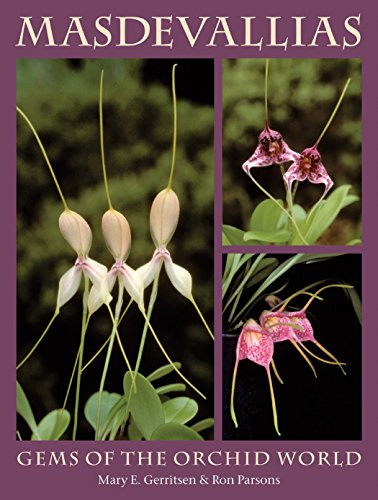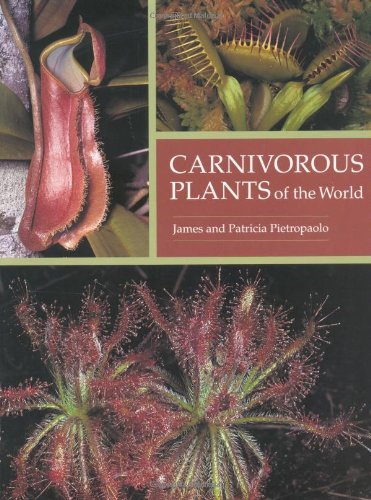(Part 2) Best flower gardening books according to redditors
We found 76 Reddit comments discussing the best flower gardening books. We ranked the 55 resulting products by number of redditors who mentioned them. Here are the products ranked 21-40. You can also go back to the previous section.




















Well with my original brugmansia 5 years ago I believe that I severely underfed it. They are really hungry plants. It also could have used a larger pot. This book helped me to figure out what it really needed. I highly recommend it.
I didn't realize it until last summer, but underfeeding my plants had consistently been a problem for me ever since I started gardening. I had always used liquid plant foods and was never consistent enough with it to keep my hundred or so ornamental plants really happy. I switched almost entirely over to slow release dry fertilizers. Both organic and inorganic, depending on type of plant, location, and it's nutritional needs. The kind of things you only give the plant every 3-4 months. It's a lot easier for me to keep plants fed well if it doesn't take an extra step every time I have to water. Once my plants were well fed, they became much more resistant to pests and more resilient to stress. It's surprising just how much of a difference consistent fertilizing can make.
Rhttps://www.amazon.com/Masdevallias-Orchid-World-Mary-Gerritsen/dp/0881927376
I haven’t gotten very far into this book, but it does have a fair amount of info on the historical discoveries in the genus and it’s certainly a niche book. It, of course, does have car info too. Not sure it’s what you’re looking for but may be worth checking out!
Also, not books but you may be able to find some more scientific reads over on Google Scholar- a review paper on a groups evolution may be easily found and for your bill as well.
For slipper orchids, one of the latest is Slipper Orchids of the Americas, a comprehensive and authoritative review of Phragmipedium, Mexipedium, and Selenepedium. It was released last year, so it's very up to date. It has sections on taxonomy, ecology, and evolution. It takes an in-depth look at each species, has lots of amazing full color photos and while it's very technical at times, it's also very readable and understandable.
The Genus Paphiopedilum is another book by Phillip Cribb, and as the title suggests, it's focused entirely on Paphiopedilums. It's a little dated now, and there are at least a dozen or more species that have been discovered since, but it's still a great resource. There are sections on ecology, evolution, hobby care, etc. Similar to above, there is a lot of technical terminology, but even if you aren't well-versed in the terms, it's still very readable.
Cribb has also produced Genus Cypripedium and Hardy Cypripedium: Species, Hybrids and Cultivation. The former is a monograph similar to The Genus Paphiopedilum and Slipper Orchids of the Americas and a very similar format. I read through the entire book several times back after it was first released, but I do not own it. The newer book was a surprise to me since I wasn't aware of its existence until just a few moments ago, but I can only assume it's a great source of information since Werner Frosch and Cribb are involved.
Tropical Slipper Orchids is a book by Harold Koopowitz (another important name in slipper orchid taxonomy and breeding). I don't own this one and have only seen it in passing, but it's perhaps a little more approachable for hobby growers and breeders. It covers Paphs and Phrags, and it differs from the Cribbs books in that it spends more time on breeding and hybridization (there's a short chapter in the Cribbs books, but nothing particularly exhaustive).
Anyway, many (maybe most) of the common genera of orchids have similar resources.
Northen's Home Orchid Growing is dated, but a very good book on cultivation. Bechtel's Manual of Cultivated Orchid Species is excellent- I think there's a newer edition out, but to heck if I can remember when it was published.
Ortho's orchid book is surprisingly good- mainly on cultivation.
Isobyl's New Encyclopedia of Orchids is excellent.
If she likes specific genera- paphiopedilums, phalaenopsis, cattleyas, dendrobiums, etc.- there are specific texts on each of these, and many more.
It has nothing to do with trust; when someone is using well known mathematical or physical facts, it's easy to check does the sentence make any sense. When the mathematics is WRONG and the ideas can't be checked at all - insert any random spiritual idea that is speculative - well, then you know everything is a scam...
The best books you can find on "Sacred geometry" are by J. Kapraff - "Connections" and "Beyond measure". Expensive collections of essays that usually start from no pre-requested knowledge to semi-advanced topics - the author is math. proffesor with some interesting research papers.
Other authors with many good books: Ian Stewart (easy to read), J. H. Conway (medium to advanced), K. Critchlow ( medium to advanced - https://www.amazon.co.uk/Hidden-Geometry-Flowers-Living-Rhythms/dp/0863158064/ref=sr_1_1?s=books&ie=UTF8&qid=1537534712&sr=1-1&keywords=Critchlow+hidden this one has very beautiful pictures too ), R. Penrose (advanced).
I am an amateur, but have really learned a lot from this: http://www.amazon.com/Flowering-Plant-Families-World-Heywood/dp/1554072069
Hey, I'm in SE CO.
This website is really helpful and has a wide variety of our flora: http://www.easterncoloradowildflowers.com/
Also, I use this field guide, but for prarie flowers there are some it doesn't have. (That's not to disparage it though, it does have most things you'll likely come across).
Between those two though I've been able to identify most everything I've come across here.
I found some more for you:
https://www.amazon.com/Field-Guide-Edible-Wild-Plants/dp/0811734471/ref=sr_1_3?s=books&ie=UTF8&qid=1524486204&sr=1-3&keywords=field+guide+to+edible+wild+plants
https://www.amazon.com/Guide-Full-Color-Wildflowers-Weeds/dp/0671608835/ref=sr_1_7?s=books&ie=UTF8&qid=1524486260&sr=1-7&keywords=wildflowers+and+weeds+booth+courtenay
https://www.amazon.com/Trees-Shrubs-Virginia-Oscar-Gupton/dp/0813908868/ref=sr_1_1?s=books&ie=UTF8&qid=1524486309&sr=1-1&keywords=Trees+and+shrubs+of+Virginia
https://www.amazon.com/Field-Guide-Medicinal-Wild-Plants/dp/0811734935/ref=sr_1_1?s=books&ie=UTF8&qid=1524486334&sr=1-1&keywords=Field+guide+to+medicinal+wild+plants
https://www.amazon.com/American-Horticultural-Society-Flower-Finder/dp/0671723456/ref=sr_1_1?s=books&ie=UTF8&qid=1524486392&sr=1-1&keywords=flower+finder+Jacqueline+heriteau
https://www.amazon.com/Killer-plants-poisonous-plant-guide/dp/B0007JJHIK/ref=sr_1_fkmr0_1?s=books&ie=UTF8&qid=1524486436&sr=1-1-fkmr0&keywords=killer+plants+joseph+kuzma
https://www.amazon.com/Nature-Along-Blue-Ridge-Parkway/dp/B0007HHCIE/ref=sr_1_1?s=books&ie=UTF8&qid=1524486474&sr=1-1&keywords=nature+along+the+blue+ridge+parkway
https://www.amazon.com/Flower-Expert-D-G-Hessayon/dp/0903505525/ref=la_B001KMG5W4_1_7?s=books&ie=UTF8&qid=1524486507&sr=1-7
Those are really good books. They’re my moms and we’ve used them a lot over the years. I also really like the folding waterproof guides. They’re small enough to put in your pocket. Here are some links to em:
https://www.amazon.com/Wildflowers-Mid-Atlantic-States-MD-NY/dp/1943334250/ref=sr_1_1?s=books&ie=UTF8&qid=1524486632&sr=1-1&keywords=wildflowers+of+the+mid-Atlantic+states
https://www.foldingguides.com/product/sibleys-trees-of-trails-forests-of-the-southeast/
https://www.foldingguides.com/a_fg-southeast/
https://www.foldingguides.com/foldingguides-southwest/
http://www.waterfordpress.com/products/pocket-naturalist-guides/state/virginia.html
That would be a good place to start.
Overall you should be aiming at a more imposing, evergreen landscape to frame your house. Head down to your local library for some landscaping books.
A basic book: https://www.amazon.com/All-About-Evergreens-Orthos-about/dp/0897210301/ref=sr_1_44?s=books&ie=UTF8&qid=1497827844&sr=1-44&refinements=p_27%3AOrtho+Books
Absolutely loved this book when I was getting into growing. I also had this one which was nice too.
Most of the information that I have found is in books. Some of the books are out of print and quite expensive. I enjoyed this book and the used copies are quite reasonable.
There is also a bromeliad society website and newsletter that you may want to check out.
I have probably 6 different species of bromeliads in my atrium- most of them I have been given by some friends who used to grow them for the San Diego Zoo.
Is that from Amazon US? Sorry about that :( Not much I can do about it, it seems...
https://www.amazon.com/Ditch-Dirt-Edible-Hydroponic-Plants/dp/0998739960/ref=sr_1_1?ie=UTF8&qid=1522151229&sr=8-1&keywords=ditch+the+dirt
To add to Guygan's response - I really like this book.
​
To answer your question - hardwood cutting is a fall/winter technique where you take woody material, let it callous, and then let it wake up and root in the spring. Softwood or semihard is a spring/early summer technique where you take fresh growth that is beginning to become ligneous and root that. You generally want your cutting to be not the super soft new growth at the tip, but the firmer stuff down below. Remember wood is a carbohydrate that the plant can use in an emergency situation, so a slightly woody but still growing cutting is going to give you your best chance because the wood feeds while the growing hormones are still pumping.
I currently have 2 books for sale on Amazon!
Here it is: Screw You As*hole (Printable)
Sorry if that is confusing. If you have any more questions let me know!
I love these books:
http://www.amazon.com/The-Botanical-Garden-Perennials-Annuals/dp/1552975924/ref=sr_1_2?ie=UTF8&qid=1376363975&sr=8-2&keywords=roger+phillips+and+martyn+rix
There are two volumes, early perennials and late perennials.
Fruit by Stuppy and Kesseler is packed full of gorgeous scanning electron micrographs (and other pictures too) and a lot of very detailed but very readable information. I can not reccomend it highly enough. Seeds and Pollen are also very good. I have not read it (just found it now, going straight on my wishlist) but The Bizzare and Incredible World of Plants, also by Stuppy is almost certainly excellent.
It's a bit technical and dry, but Plant Form, by Adrian Bell is one of my favorite reference books of all time. The information is fascinating, and the diagrams are gorgeous. There's a free online copy available (legal, I think) if you would like to have a look, but I would highly recomend a physical copy, and it's pretty cheap as far as reference books go. Flip through the section on Tree Architecture starting at page 296 for a sample of how cool it is. Read and understand that section and you will be amazed at the things you will start noticing about plants around you.
For plant ID, I can not reccomend Botany in a Day highly enough for a quite comprehensive tutorial in how to recognize plant groups (which makes it orders of magnitude easier to come up with a more specific ID). It's a classic, and is a required text for just about every field botany class.
Getting a good guide to your local plants that is based on dichotomous keys and diagrams rather than photos and learning how to use it is an absolute must if you want to move past the basics for IDing plants in your area. Without knowing your location, it's impossible to give good recomendations, but the Jepson Manual is a good example of what you should be looking for, and by far the best guide to California plants. Unfortunately these sorts of books are usually fairly pricey, and can be pretty impenetrable without practice (helps a lot if you already have a general idea of what it is), so you might hold off on getting one until a much later date. You can get older editions for cheaper, but at least in the case of Jepson's, most of the changes involve more diagrams and easier to use keys, so it might not be worth it.
There are loads of others that are slipping my mind at the moment, I will add them later if I remember.
Curl up with a plant dictionary at a chain bookstore. Something like http://www.amazon.com/Flower-Gardeners-Bible-Complete-Anniversary/dp/1580174620/.